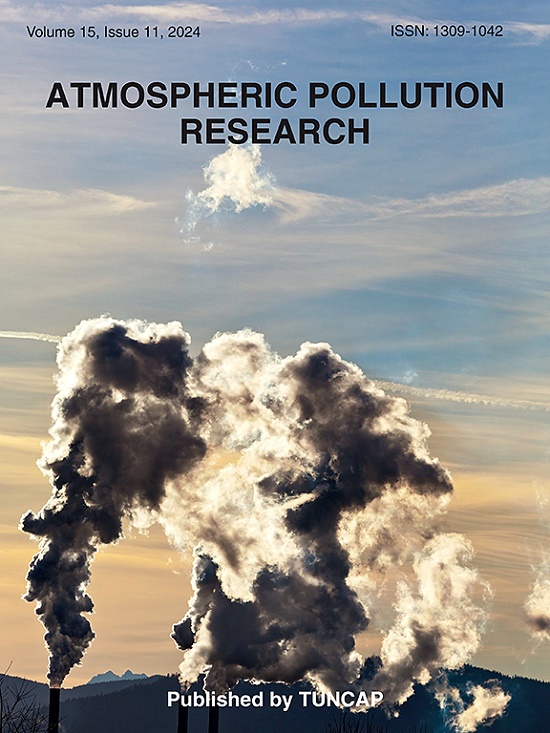中国中部地铁生物气溶胶微生物污染和抗生素耐药风险预测模型:与环境因素的相关性
IF 3.5
3区 环境科学与生态学
Q2 ENVIRONMENTAL SCIENCES
引用次数: 0
摘要
尽管地铁系统在全球范围内普遍存在,但生物气溶胶微生物群落和抗生素抗性基因(ARGs)的环境驱动因素仍然缺乏特征。采用高通量16S rRNA测序和qPCR技术,对中国中部地铁生物气溶胶的微生物组成、ARG分布及相关健康风险进行了研究。本研究采用响应面法(RSM)对地铁生物气溶胶中微生物- arg动力学进行建模和预测,确定关键环境因素。采用冗余分析(RDA)等统计方法来评估模式和环境对微生物和ARG分布的影响。结果显示,平均可培养细菌浓度为133 CFU/m3,车站入口最高(230 CFU/m3),站台最低(35 CFU/m3)。优势属包括芽孢杆菌、葡萄球菌和肠球菌,湿度和温度与病原菌丰度显著相关(大肠杆菌、假单胞菌)。ARG分析发现了高时间变异性,主要是β -内酰胺酶、多药和四环素耐药。RDA结果显示,许多细菌属与湿度、温度和光照呈正相关,而风速呈负相关。细颗粒物(≤3.3 μm)占生物气溶胶的大部分,健康风险评估表明,吸入可培养细菌的健康风险在可接受范围内。该研究强调了环境因素在地铁微生物和ARGs动态形成中的作用,并为城市交通系统中空气传播健康风险的监测提供了框架。本文章由计算机程序翻译,如有差异,请以英文原文为准。

Predictive modelling of microbial contamination and antibiotic resistance risks in subway bioaerosols: correlation with environmental factors in central China
Despite the global prevalence of subway systems, the environmental drivers of bioaerosol microbial communities and antibiotic resistance genes (ARGs) remain poorly characterized. This research investigated the microbial composition, ARG distribution, and associated health risks in subway bioaerosols across central China, using high-throughput 16S rRNA sequencing and polymerase chain reaction (qPCR). This study employs response surface methodology (RSM) to model and predict microbial-ARG dynamics in subway bioaerosols identifying key environmental factors. Statistical approaches like Redundancy Analysis (RDA) were applied to assess patterns and environmental influences on microbial and ARG profiles. Results revealed an average culturable bacterial concentration of 133 CFU/m3, with peak levels at station entrances (230 CFU/m3) and minimal detection on platforms (35 CFU/m3). Dominant genera included Bacillus, Staphylococcus, and Enterococcus, while humidity and temperature correlated significantly with pathogen abundance (Escherichia coli, Pseudomonas). ARG profiling identified high temporal variability, with beta-lactamase, multidrug, and tetracycline resistance as predominant. RDA results revealed that many bacterial genera were positively associated with humidity, temperature, and lighting, while wind speed had a negative correlation. Fine particles (≤3.3 μm) comprised the majority of bioaerosols, while health risk assessment indicated that the health risk due to inhalation of culturable bacteria was within acceptable limits. This study highlights the role of environmental factors in shaping dynamics of subway microbes and ARGs and provides a framework for monitoring airborne health risks in urban transit systems.
求助全文
通过发布文献求助,成功后即可免费获取论文全文。
去求助
来源期刊

Atmospheric Pollution Research
ENVIRONMENTAL SCIENCES-
CiteScore
8.30
自引率
6.70%
发文量
256
审稿时长
36 days
期刊介绍:
Atmospheric Pollution Research (APR) is an international journal designed for the publication of articles on air pollution. Papers should present novel experimental results, theory and modeling of air pollution on local, regional, or global scales. Areas covered are research on inorganic, organic, and persistent organic air pollutants, air quality monitoring, air quality management, atmospheric dispersion and transport, air-surface (soil, water, and vegetation) exchange of pollutants, dry and wet deposition, indoor air quality, exposure assessment, health effects, satellite measurements, natural emissions, atmospheric chemistry, greenhouse gases, and effects on climate change.
 求助内容:
求助内容: 应助结果提醒方式:
应助结果提醒方式:


